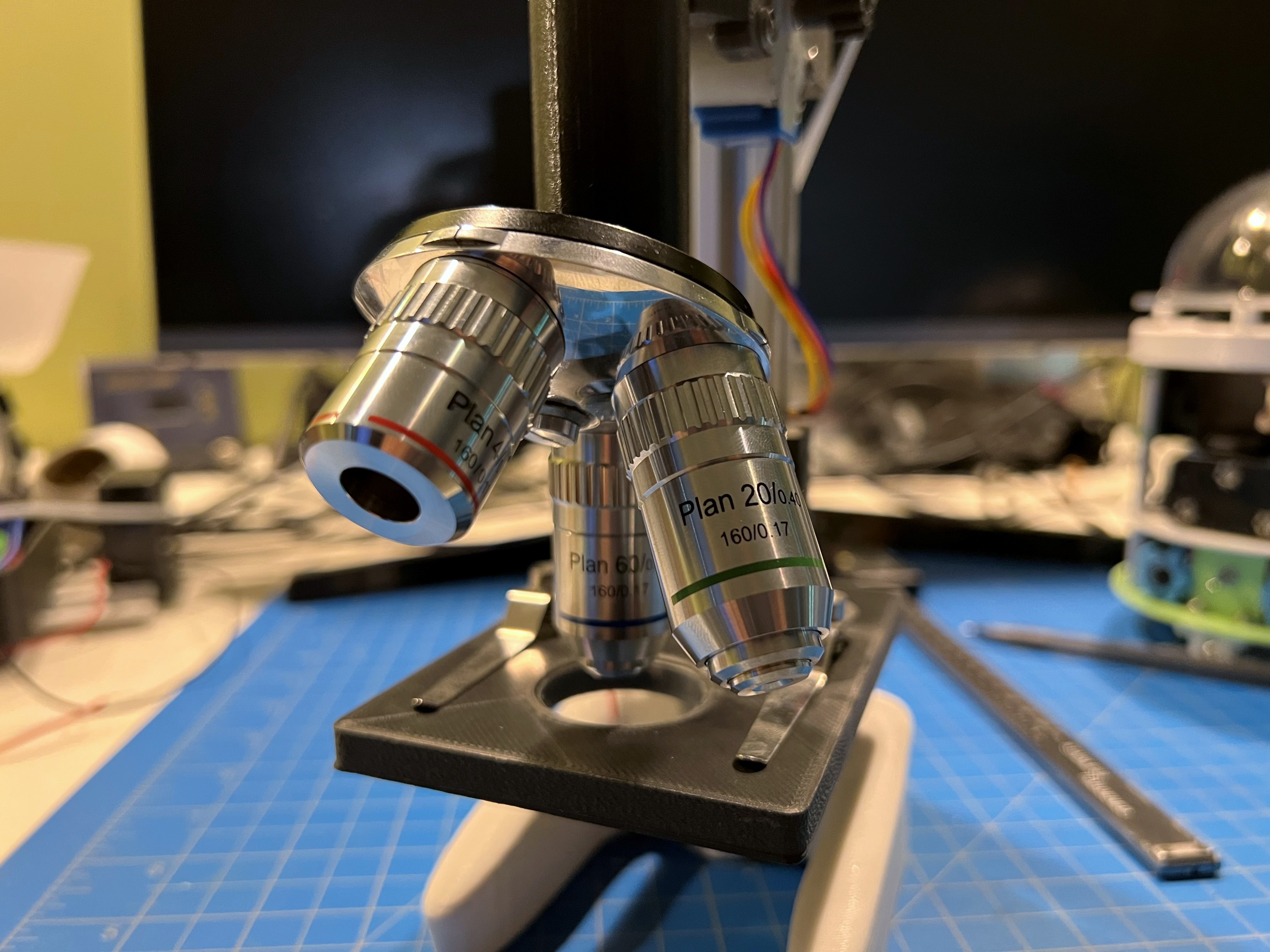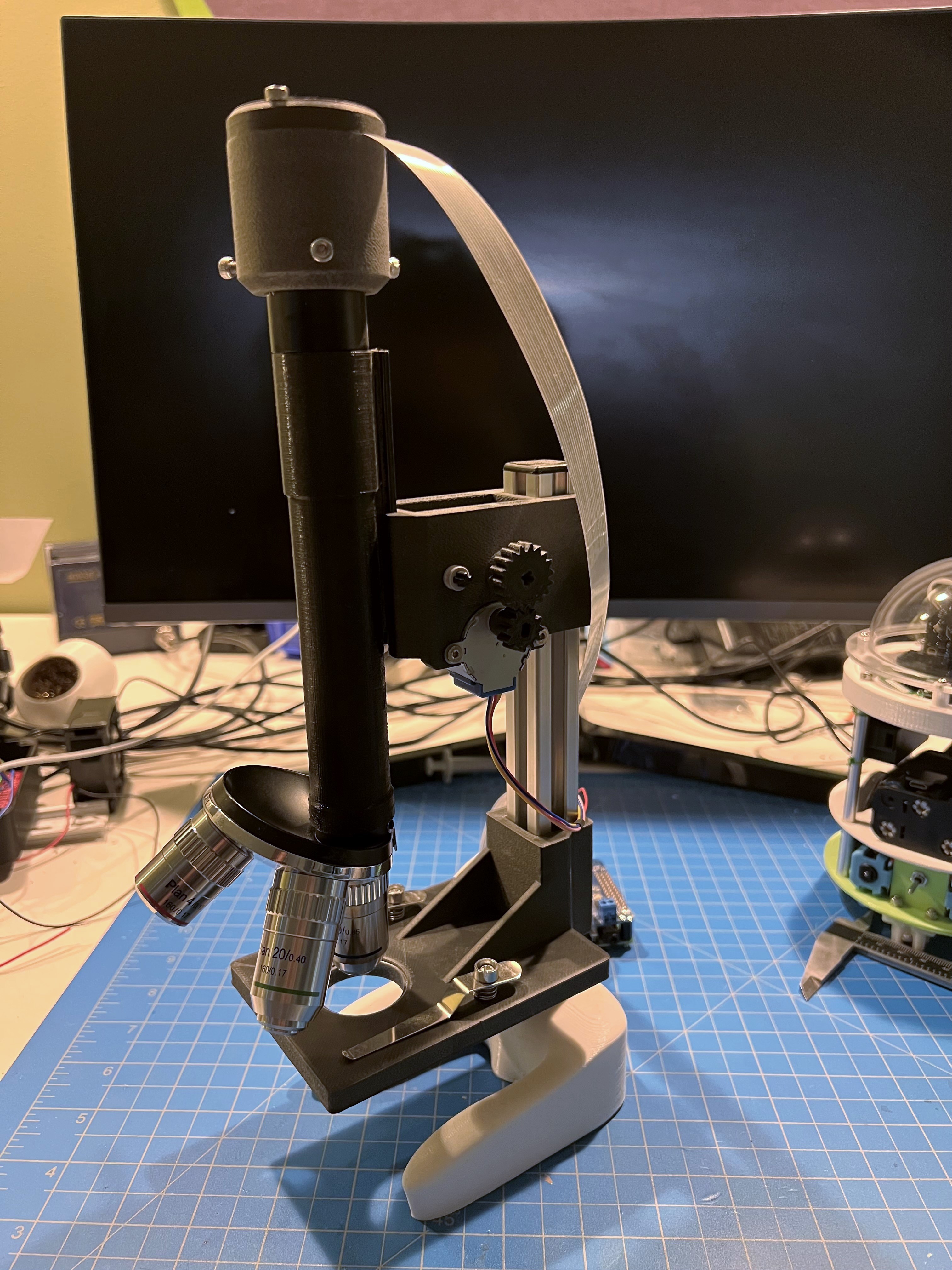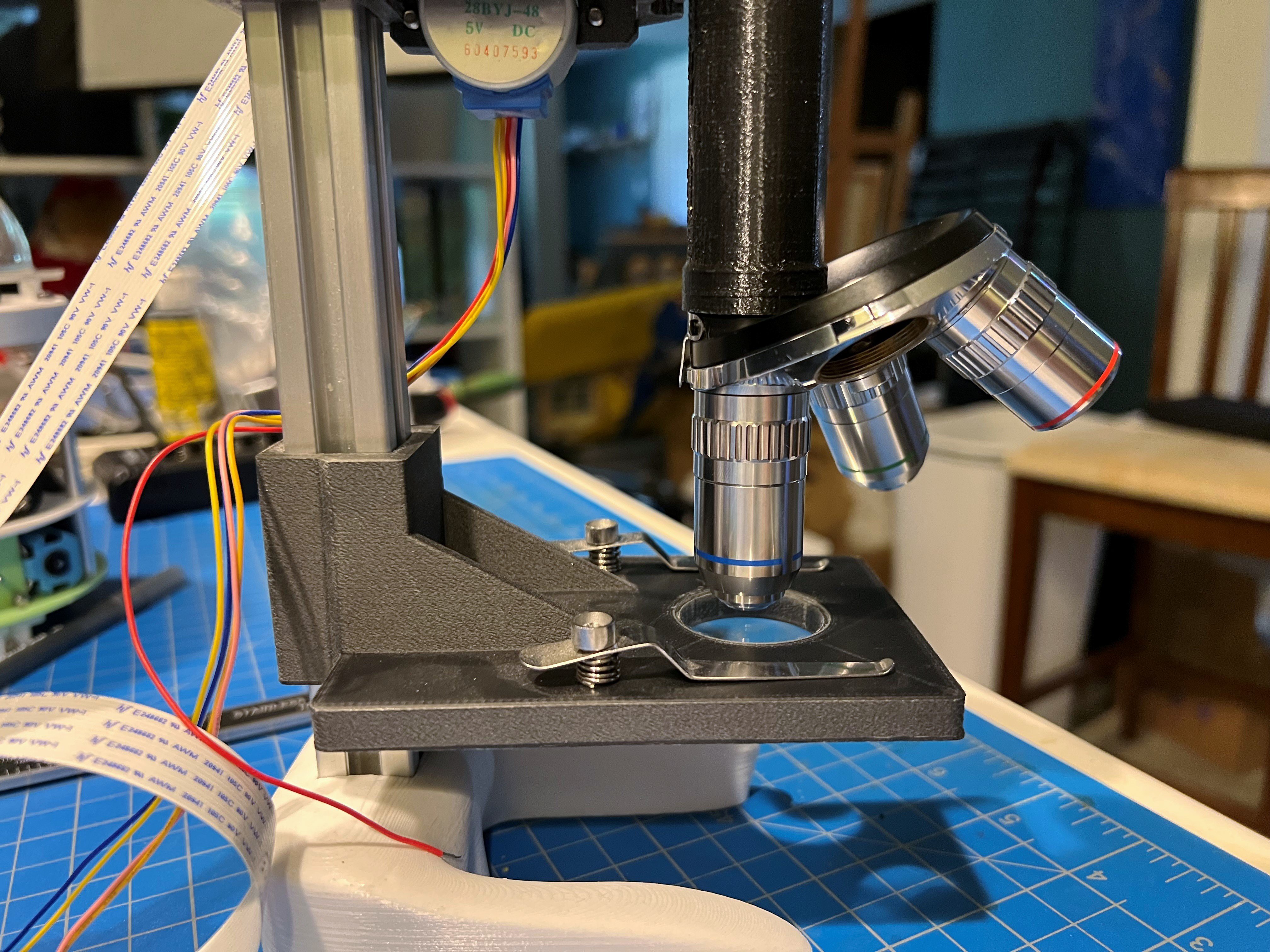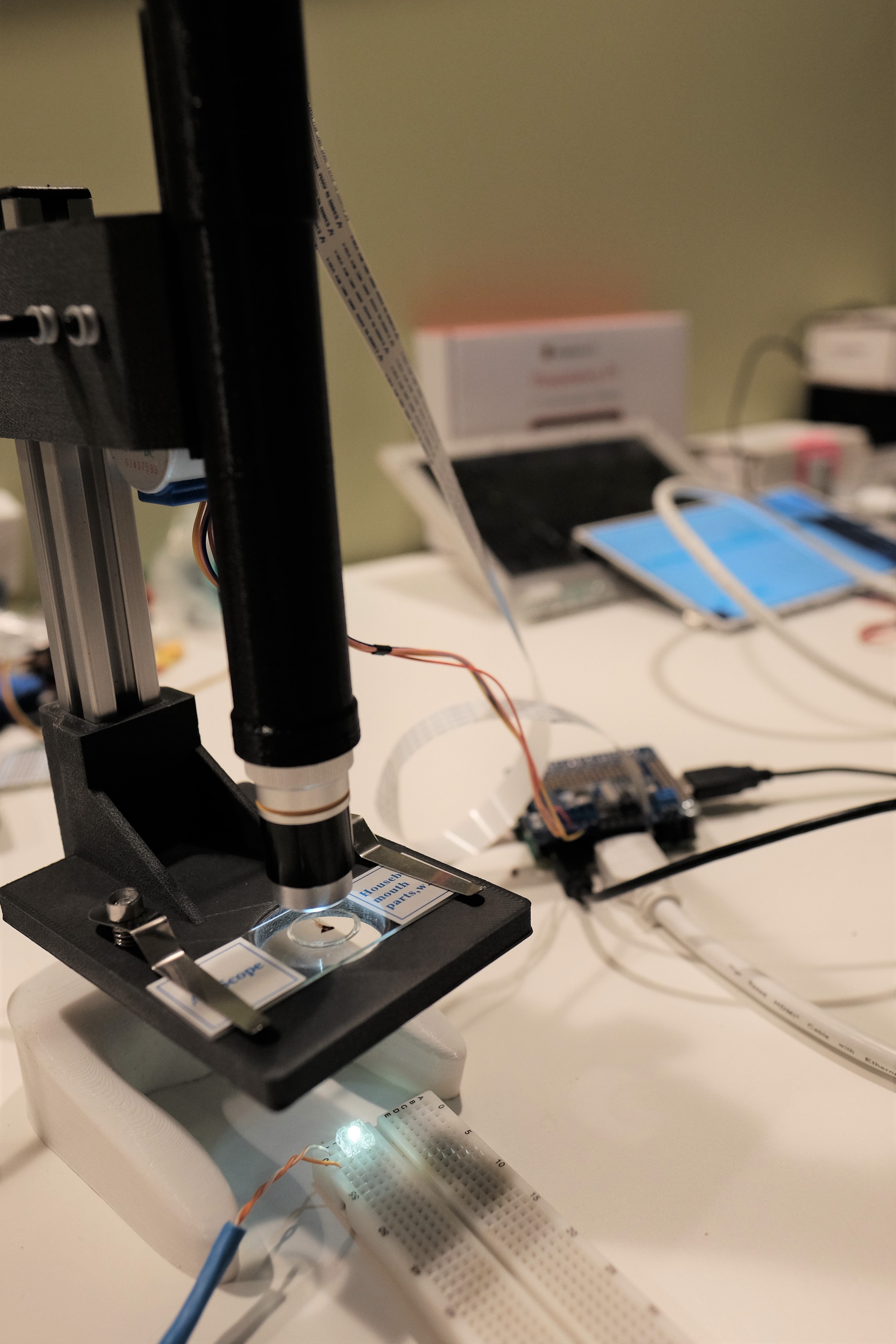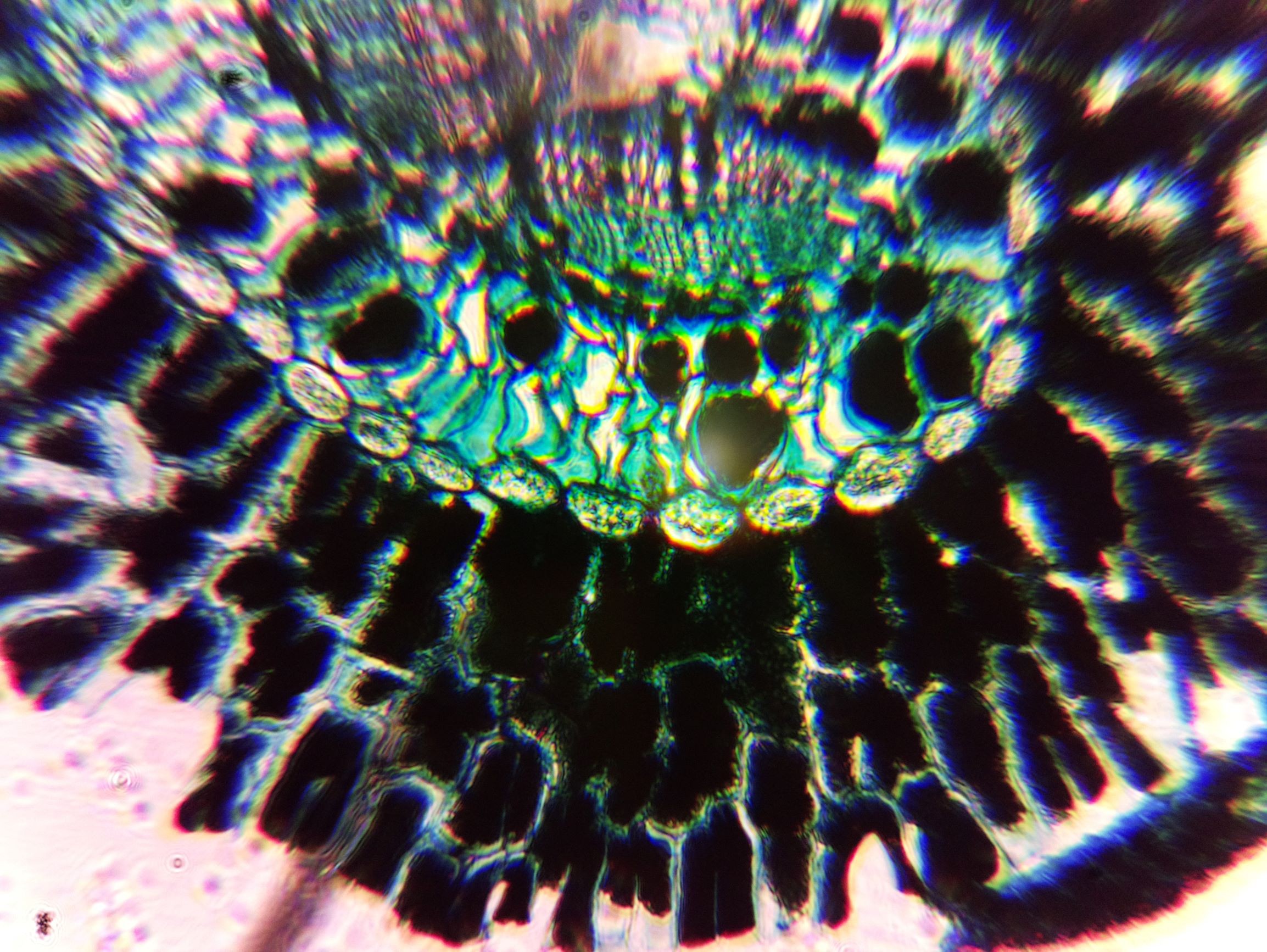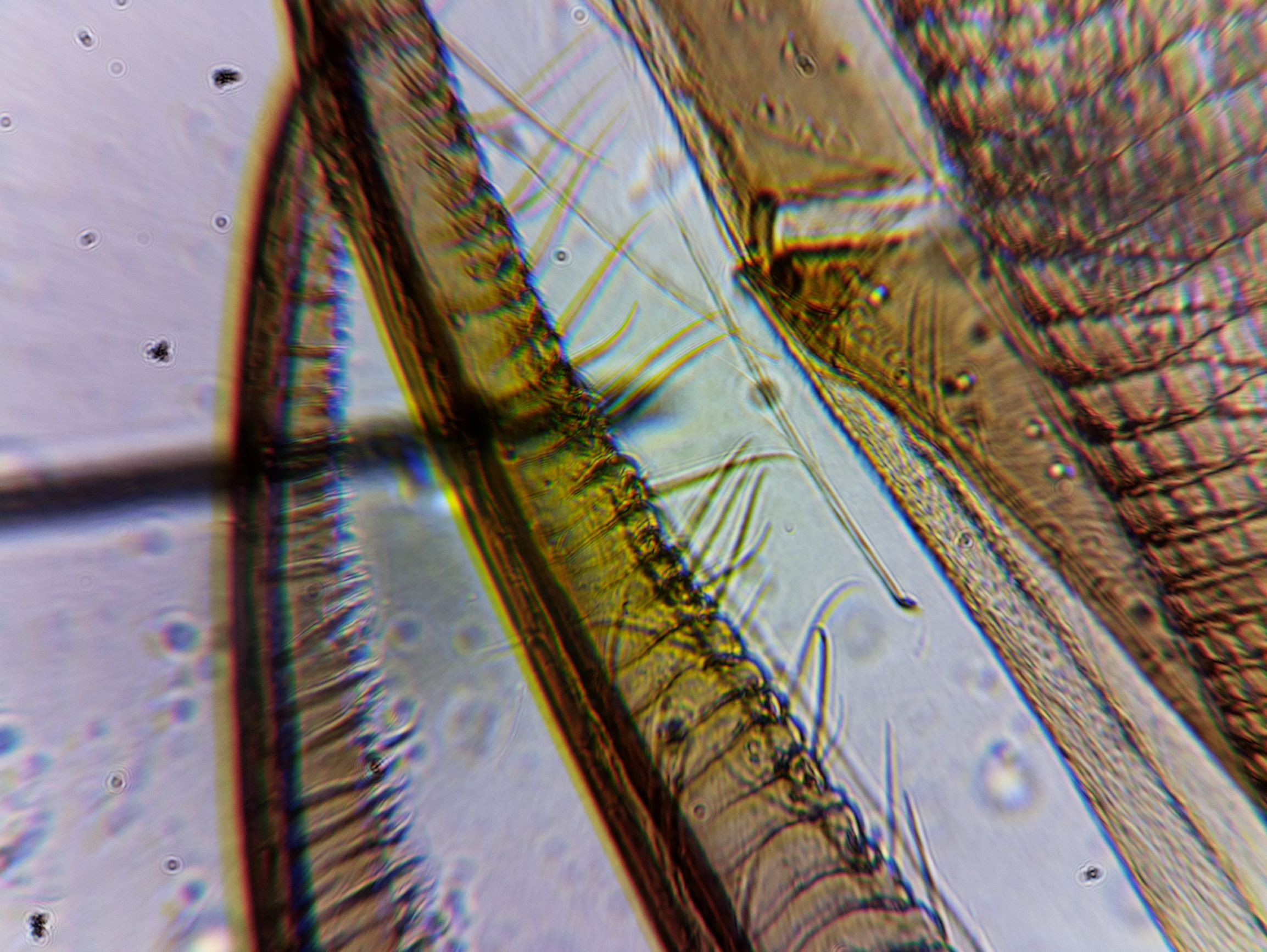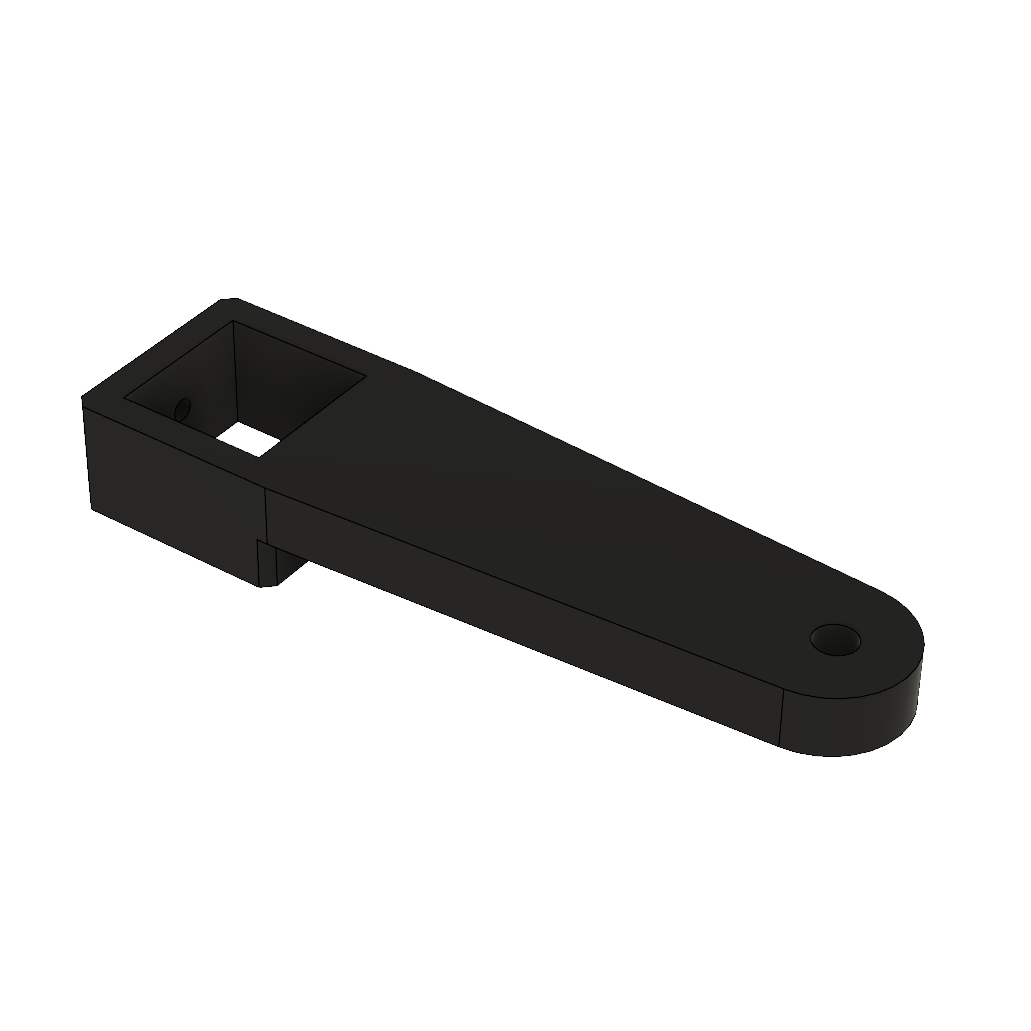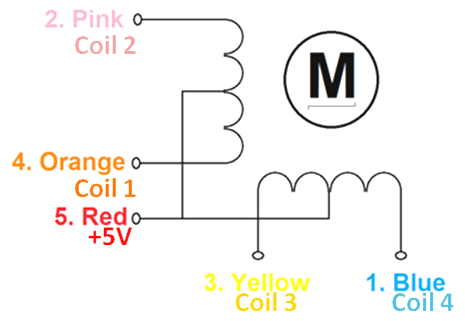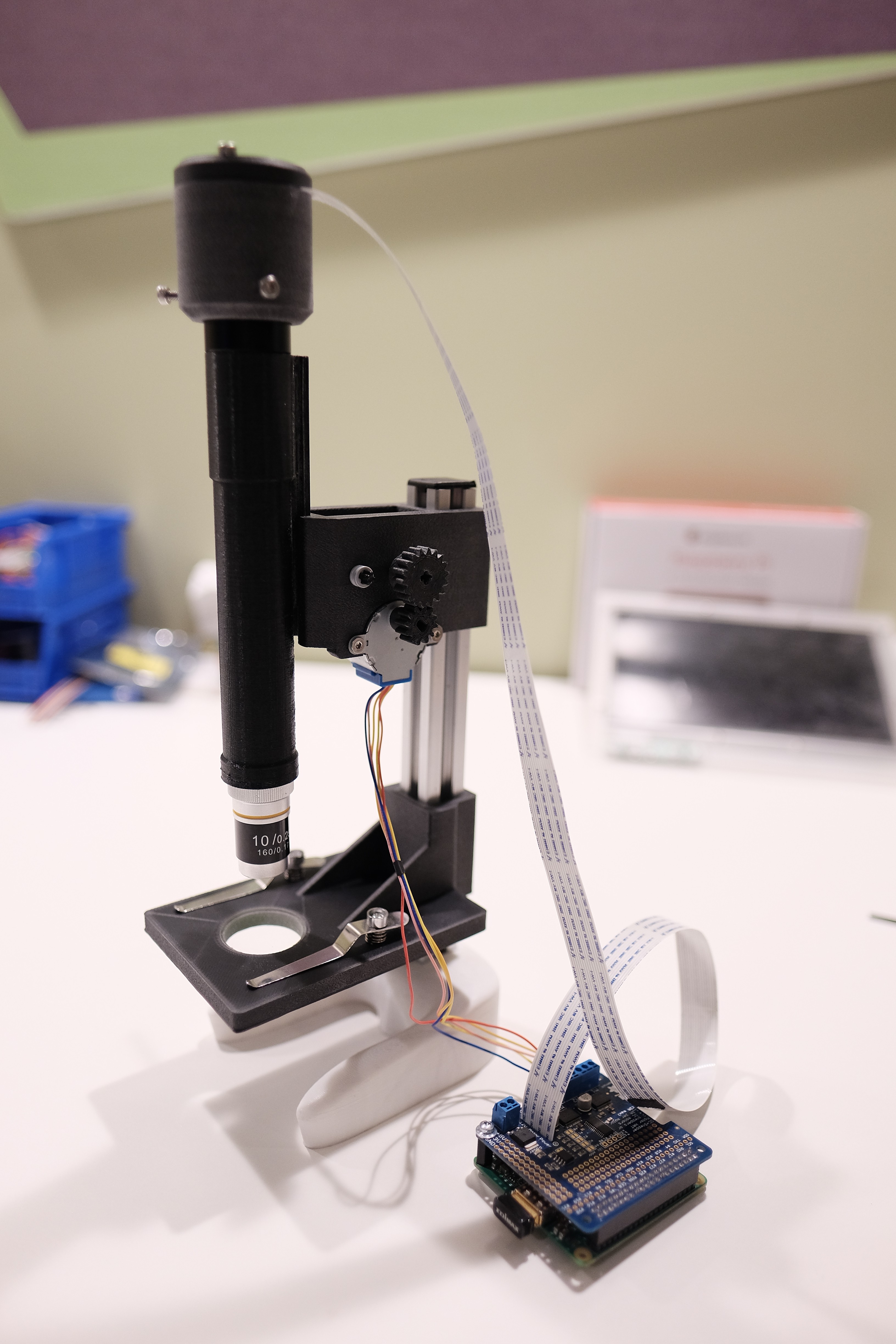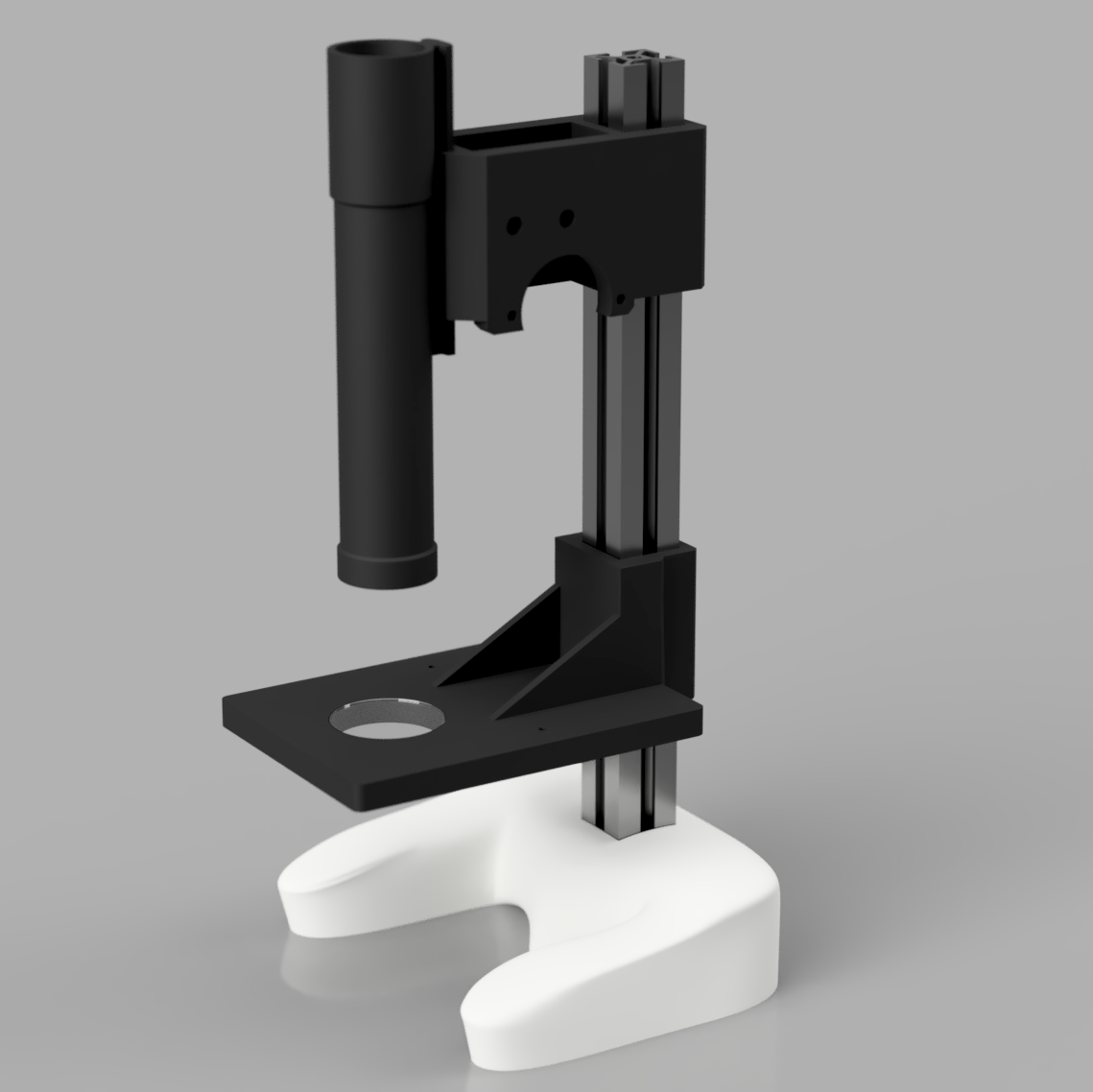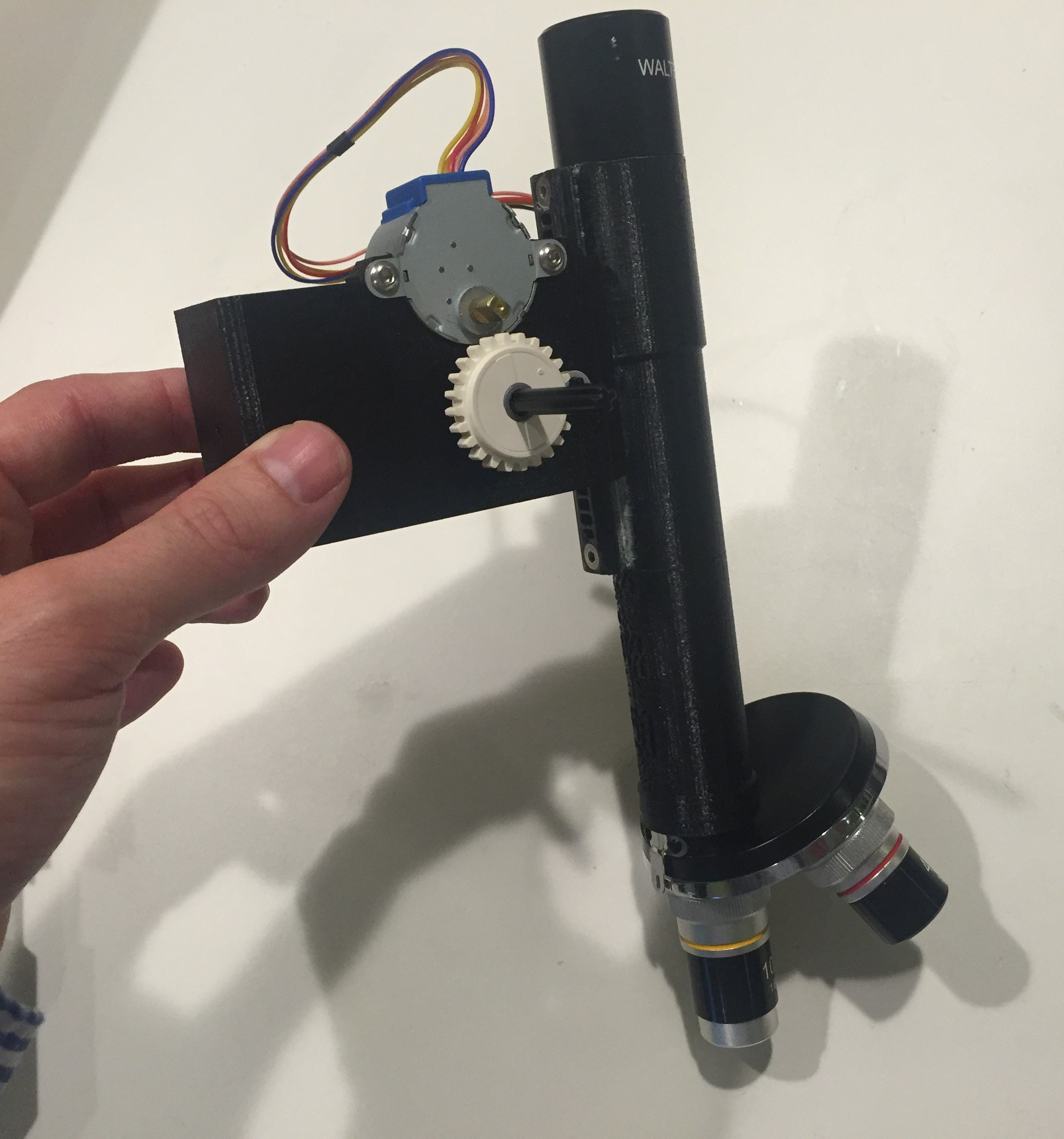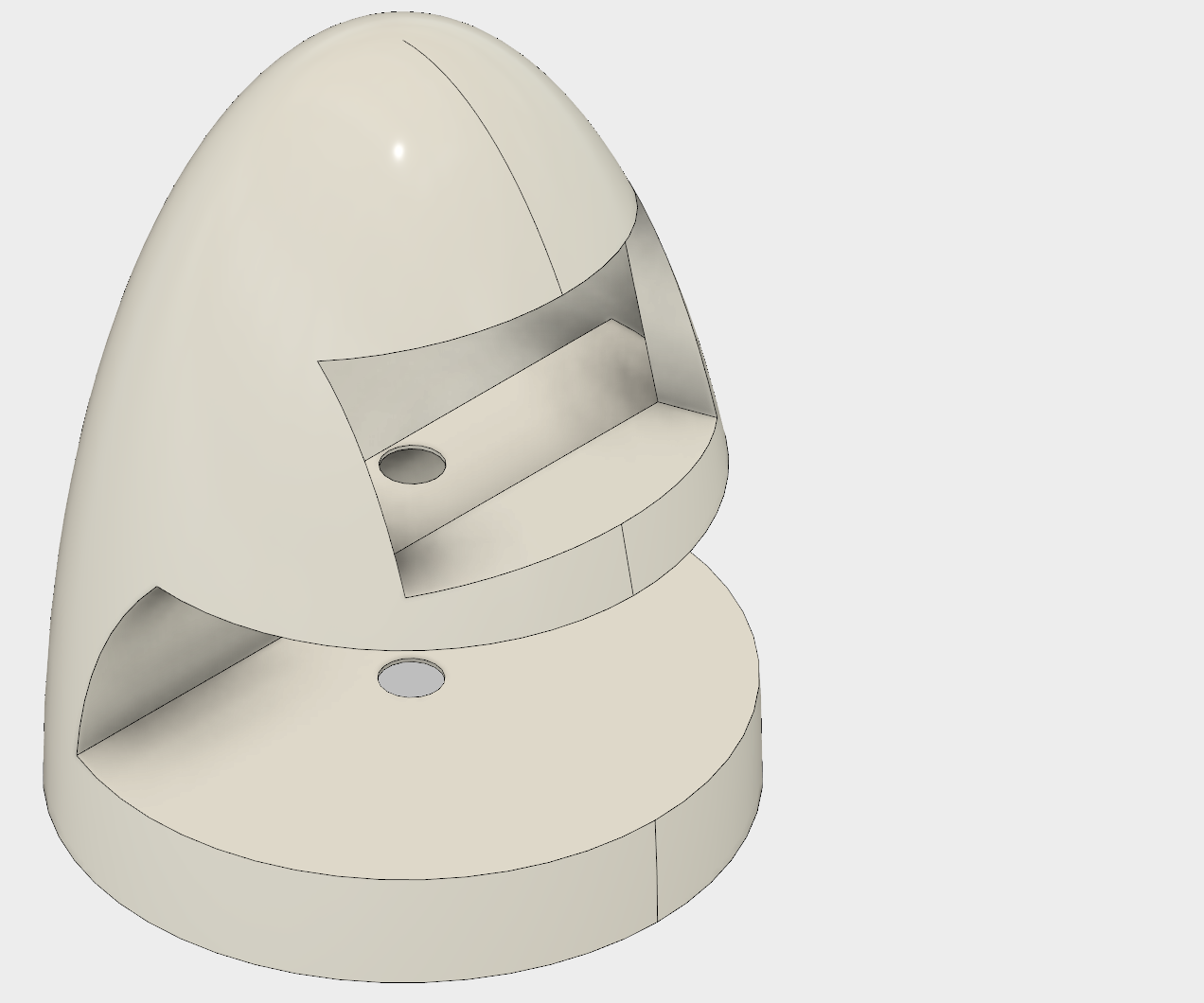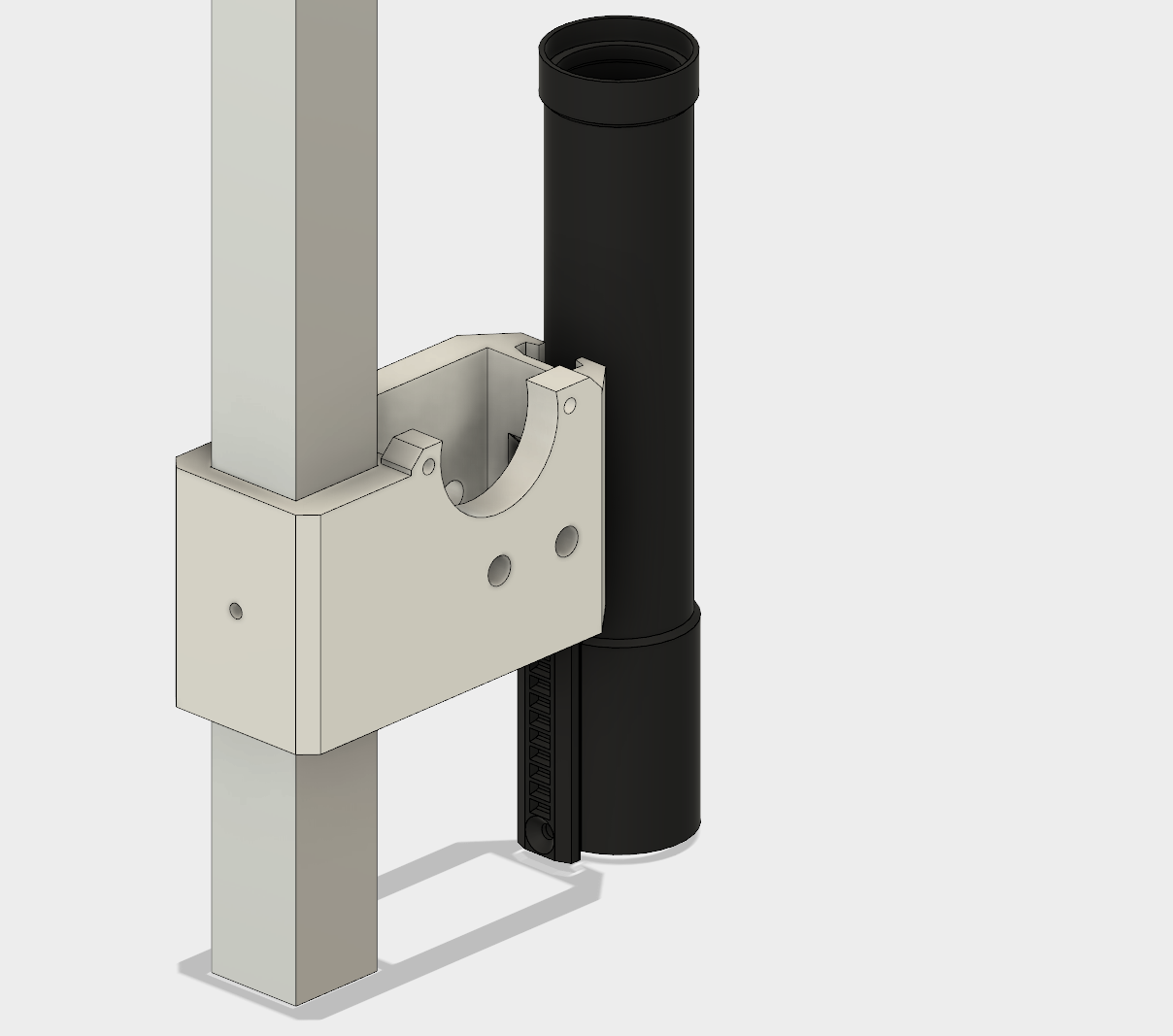-
Added a 4x turrent
07/31/2022 at 18:22 • 0 commentsAdded updated optics and a 4 bay turret to the scope. This modification was down long ago, but I never really got around to posting.
![]()
![]()
![]()
-
I took a picture or two...
12/16/2018 at 02:40 • 0 commentsHere is the scope all hooked up with a quick bright white LED I found.
![]()
And a few images of a pine leaf and Housebee mouth parts. Images were downsized for loader. About 7.7 MP each normally
![]()
![]()
Looks like next will be some upgraded optics. Don't forget to check out https://hackaday.io/project/162831-pcb-inspection-microscope where I will be building a base to turn this biological scope into a PCB inspection scope.
Enjoy!
Apollo
-
5mm LED holder
12/13/2018 at 21:38 • 0 commentsI whipped up a design for a simple LED holder. Use a bright white 5mm LED. You can power it with two wires from the 5 volt rail. Make sure to use a appropriate size resistor for your LED. For a fancy version you can use the PWM I/O on the Pi or add a pot to adjust the brightness manually.
File is under 5mm_LED_holder v3
Enjoy!
Apollo
-
Added .STL files
12/12/2018 at 14:57 • 0 commentsI added all the .STL flies to the page. This microscope design uses a commonly available 28BYJ-48 Stepper Motors.
Here is a pin out of the coils
![]()
Below are some tips if you are looking to make your own.
- It's best to grease the optical tube and gear rack, you will want to ensure there is a good fit and that it moves freely as possible.
- The Pi Camera will need to have it's lens removed to get the best pictures.
- I found the slide holders on EBAY, on the slow boat from China. (the 67mm version named "Slides Clip Stage Presser Pressure Holder Stainless Steel"
- The 32mm watch glass was found locally for under 3 dollars.
- The 20mm x 20mm extruded aluminum T-slot is 230mm long
- You will also need a 20mm to 25mm adapter that will glue into the bottom of the optical tube. (Also from EBAY "Adapter RMS Thread to 25mm M25 for Nikon Leica Microscope")
I still need to design a simple 5mm bright white LED light holder. But in the meantime you can use any source of stable light. The sun, a flashlight, or your cell phones camera light.
That's all I got for now, need to get my car to the shop.
Apollo
-
Introducing Pi Microscope v3
12/12/2018 at 04:21 • 0 commentsStardate 96546.25
I'm here to resurrect this project from the depths of time...
There I was stuck at the origin of Autodesk Fusion wondering though the vast array of design files, only to find that the Pi microscope needed a bit of TLC. I then went on a spree of design and redesign. Though all of this, I'm proud to present the microscope v3.
Well it looks the same you say? Wrong...
Updated features include:
- A new camera mount compatible with the Raspberry Pi 8MP camera
- Lego gears (I'm unabashedly an adult AFOL ( Adult Fan Of Lego ))
- Objectives are now easily screwed in to the bottom of the optical tube with metal internal threads
- A 32mm mineral glass for the platform
- Integrated stepper motor mounting
- A 3D printed rack attached to the optical tube
- Stronger over all
- Less parts to print
- Cheap as ever
How many design iterations did it take?
Well over 20 for some and only minor adjustments for others. Here is a look at the CAD render.
![]()
Below is a look at all the parts used:
Note: I should be getting to uploading the design files tomorrow. But know that the ones that say v3 on them are the correct parts to print for the newest design. You will also need "microscope base" and "base plate" .STL files.
How do I build it?
Well first stop procrastinating and start printing the parts. Then buy some objectives and a Pi.
As for printing:
I have three different print layer sizes to choose from.
0.1 mm - you want a show piece microscope that does work!
0.15 mm - you want a functional microscope to show to friends and family \o/
0.2 mm - you want to have a really nice looking paper weight that does not function...
All the holes are slightly under sized so you can carve them out a bit for a better fit.
Enjoy!
Apollo
-
New Github Link
09/30/2016 at 20:45 • 0 commentsFor those looking for our newest files. We have connected them to the Arch Reactor Github here:
-
Design Revision V3
09/30/2016 at 20:30 • 0 commentsHello all o//
I have put a lot of thought in making the microscope more usable and on the same level as other microscopes. To that end we have been designing a newer optical tube element and gearing. At the moment it is using Lego gears however we are switching to pre-made injection molded gears for reduced backlash. This newer version also adds a rotatable objective element that houses 4 objective lenses. It will also have a very nicely spun molded casing with a build it Pi foundation 7 Inch display.
We are also incorporation the motor into the frame to reduce part count and mesh with the gear reduction. The optical tube now features a 3D printable gear rack that not only gives the design a refined look it does away with the older fishing line method that was know to slip or become non operational after a long period.
It also has been exiting to see many individuals approaching us on the project wanting to make it there self's and has been a very rewarding project.
Below are some sneak peaks of the design and I hope you enjoy the refinements.
![]()
![]()
The current shell design.
![]()
Thanks for looking and make sure to comment below!
Apollo
-
Improvements being made
08/22/2016 at 14:49 • 0 commentsWe are moving on to a version 2 our of microscope. We have the basics working. We are now going to see if we can improve the quality of the images. They are adequate, but we want better. In addition, we are creating a custom body that will incorporate some new display features. This should help increase our refresh rate, and give better visualization of the slides.
-
Software Updates
08/03/2016 at 16:42 • 0 commentsNow that we have a working prototype, we are turning to upgrades. We have recruited some new help to upgrade our software. We will be improve our web interface and begin working on the X/Y stitching application.
-
Overview of Microscope
07/10/2016 at 01:31 • 0 commentsJust a quick video explaning the differnt elements of the microscope.
Internet of Things Microscope
We are updating the microscope using open source materials to make microscopy accessible globally
